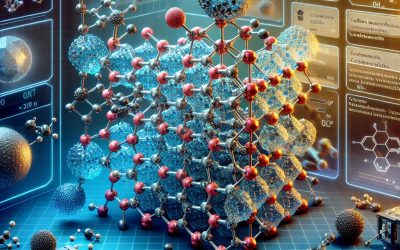Exploring the Fascinating World of Computational Chemistry: A British Perspective
Computational chemistry is a branch of chemistry that uses computer simulations and mathematical models to study chemical systems. It involves the application of theoretical methods, such as quantum mechanics and molecular dynamics, to understand and predict the...
The Perils of Radioactivity: Navigating the Hazards of Nuclear Energy
Radioactivity and nuclear energy are topics that have gained significant attention in recent years. With the increasing demand for energy and the need to find sustainable and clean sources of power, understanding radioactivity and nuclear energy is crucial. This...
Exploring the Advancements in Electronic and Optical Materials: A British Perspective
Electronic and optical materials play a crucial role in modern technology, enabling the development of devices such as smartphones, computers, solar cells, and medical imaging equipment. These materials have revolutionized various industries and have become an...
Exploring the Benefits of Green Chemistry in the UK: A Sustainable Solution for a Greener Future
Green Chemistry is a scientific approach that focuses on the design and development of chemical products and processes that are environmentally friendly, economically viable, and socially responsible. It aims to minimize the use and generation of hazardous substances,...
Unravelling the Mysteries of Statistical Mechanics: A British Perspective
Statistical mechanics is a branch of physics that aims to explain the behavior of macroscopic systems by studying the statistical properties of their microscopic constituents. It provides a framework for understanding the thermodynamic properties of matter and has...
Unraveling the Mysteries of Chemical Structure and Bonding: A Comprehensive Guide
Chemical structure refers to the arrangement of atoms and the bonds between them in a molecule. Chemical bonding, on the other hand, is the process by which atoms are held together to form molecules or compounds. Understanding chemical structure and bonding is crucial...
The Periodic Table of Elements
1 H hydrogen1.008 2 He helium4.0026 3 Li lithium6.94 4 Be beryllium9.0122 5 B boron10.81 6 C carbon12.011 7 N nitrogen14.007 8 O oxygen15.999 9 F fluorine18.998 10 Ne neon20.180 11 Na sodium22.990 12 Mg magnesium24.305 13 Al aluminium26.982 14 Si silicon28.085 15 P...
Revolutionizing Industries with Nanomaterials: A Look into the Future of British Innovation
Nanomaterials are materials that have been engineered at the nanoscale, typically between 1 and 100 nanometers. At this scale, materials exhibit unique properties and behaviors that differ from their bulk counterparts. Nanomaterials have become increasingly important...
The Menace of Environmental Pollutants: A Call for Action in Protecting Our Planet
Environmental pollution is a pressing issue that affects the health of humans and the planet. Pollution refers to the introduction of harmful substances or contaminants into the environment, which can have detrimental effects on living organisms and ecosystems. It is...
Exploring the Fascinating Relationship Between Thermodynamics and Kinetics in Chemical Reactions: A British Perspective
Chemical reactions are fundamental processes that occur in various fields of science, including chemistry. In order to fully understand and predict these reactions, it is essential to have a grasp of the concepts of thermodynamics and kinetics. Thermodynamics deals...
Exploring the Fascinating World of Thermodynamics: Understanding the Laws and Applications
Thermodynamics is the branch of physics that deals with the relationships between heat, work, and energy. It is a fundamental field of study that has applications in various scientific and engineering disciplines. The word “thermodynamics” is derived from...
Mastering Stoichiometry: A Comprehensive Guide to Balancing Chemical Equations
Stoichiometry is a fundamental concept in chemistry that plays a crucial role in understanding and predicting chemical reactions. It involves the quantitative relationship between reactants and products in a chemical reaction. By using stoichiometry, chemists can...













